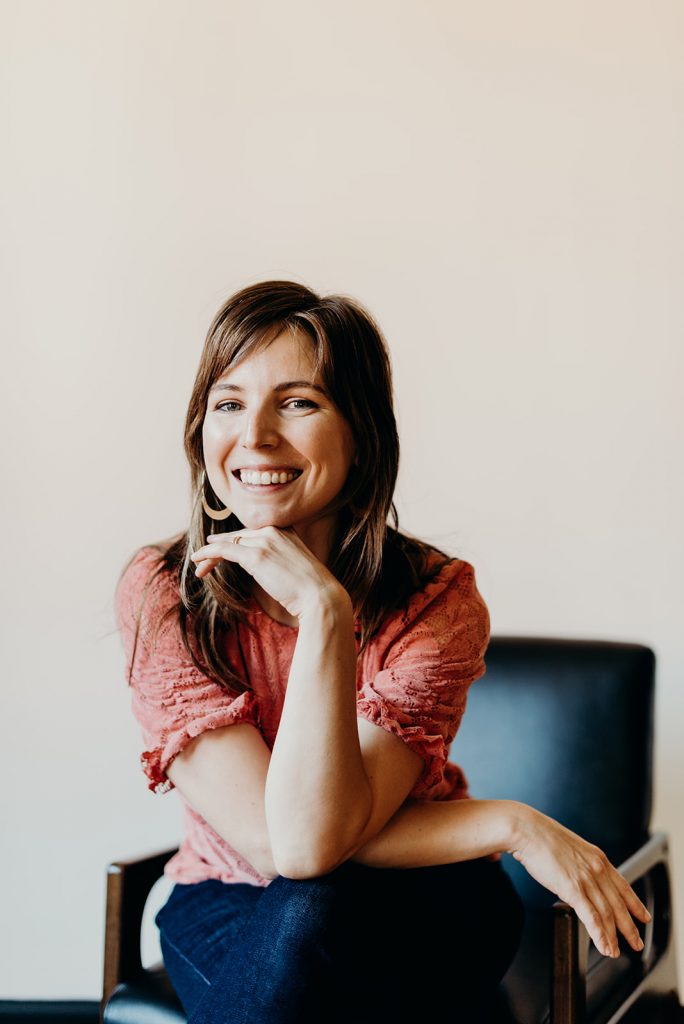Yoga Can Improve Mental Health, On and Off the Mat
Just like most modern people, I started practicing yoga because I wanted to look good and feel better in my body.
I had no idea that yoga would totally change my life, let alone improve my mental health.
I admired the strong curve of my yoga teacher’s arms.
And the gravity-defying balancing acts that some of my class compatriots confidently championed were remarkable.
I wanted to sip some of their Kool-Aide.
But if you practice yoga for more than a week, you’ll quickly realize that there’s a lot more to it than gaining lean muscle and contorting your body into strange poses with funny names.
Because when you have to hold an uncomfortable position for an extended period of time, the voices in your head start to boom loudly.
“Get me out of here!” your mind might scream.
“How much longer? Oh gosh, I hope I don’t fart…What was that weird thing we were just chanting? I couldn’t pronounce any of it…I wish my mat wasn’t so slippery…”
It’ll draw on, and on, and on.
As you hold a yoga pose, the potential distractions your mind comes up with are endless.
It becomes embarrassingly clear how much mental baggage you’re carrying around most of the time.
You come to realize how much you let stressful thought patterns run the show of your life.
But the physical discomfort and amplified mental restlessness, combined with your teacher’s gentle reminders, push you to bring your attention back to your breath, back to the present moment.
You start to notice how much better you feel without all that mental chatter distracting you.
And after just a few yoga sessions, you start to carry those skills off the mat, improving not just your physical strength, flexibility, and resiliency, but your emotional strength, flexibility, and resiliency, too.
Scientific studies are showing that yoga really does improve mental health.
A 2017 meta-analysis published in the journal Psychoneuroendocrinology, looked at 42 studies and concluded that practices that include yoga poses appear to reduce stress at statistically significant levels. 1
But while benefits to mental health are being observed, the truth is that the way most people practice yoga outside of India is incomplete, and therefore has no more benefit than any other regular physical activity. 2
Because the action on your yoga mat is actually only a tiny aspect of the bigger picture.
Ok, we need to get real geeky here for a sec.
Until you do a yoga teacher training, most people think that asana (a.k.a. poses) are all there is to yoga.
Maybe you even do a chant here and there, or some meditation and some breathwork.
But the foundation of yoga is much broader than that.
Yoga practice rests on Pantajali’s Yoga Sutras, which describe Eight Limbs of Yoga that might be thought of as an Indian version of the 10 Commandments.
They basically describe strategies for living a good life, and while the physical asana practice is part of it, it’s only 3rd on the list of 8.
People have recognized for thousands of years that every part of your lifestyle can impact your health, both physical and mental, and the Eight Limbed Path of Yoga is a great framework to use if you want to design your life for optimal well-being.
The Eight Limbs of Yoga are as follows:
- The Yamas (moral disciplines), which include non-harming, truthfulness, non-stealing, conservation of energy, and non-hoarding (or non-greediness).
- The Niyamas (often translated as “duties”), which include cleanliness, contentment, discipline, spiritual and Self study, and surrender to a higher power.
- Asana (the physical postures that draw most people into yoga in the first place)
- Pranayama (breathing techniques)
- Pratyahara (withdrawing from the senses to focus inward)
- Dharana (concentration)
- Dhyana (meditation)
- Samadhi (the ultimate goal of Yoga: Enlightenment or bliss)
Many of the 8 Limbs of Yoga are being proven by modern science to improve mental health.
The Yamas teach you how to be a good citizen, strengthening your sense of connection and community which studies of the Blue Zones (the paces on earth with exceptionally high numbers of people who live to be 100) have shown are essential components of mental health and overall vitality. 3
The Niyamas have mental health built into them as well.
Gratitude lists, for example, are a great way to practice contentment and have been proven repeatedly to improve mental health. 4
Pranayama (a.k.a. breathing practice), which often goes hand in hand with the asana practice that dominates in most modern yoga studios, has been proven to reduce stress and increase an overall sense of wellbeing. 5
And while discussion of the nuances between pratyahara, dharana, and dhyana can be saved for another day, suffice it to say that meditation is a hot-topic in the wellness world for a reason.
Multiple studies have shown that meditation can improve anxiety, depression, and pain, and may also be beneficial for improving stress levels and overall quality of life. 6
Clearly, there’s a lot more to yoga than most people realize, and the benefits are far-reaching when you start exploring it at deeper levels.
Yes, the way yoga is practiced today is wonderful, because it helps people live healthier lives.
But the true benefit is that it plants the seeds for a much bigger personal transformation that you may not otherwise be open to, and if you keep showing up, those seeds will grow when you’re ready.





